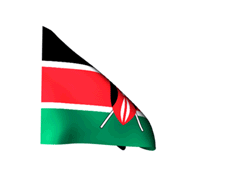SUPREME COURT HOLDS TRANSFER OF WINDING UP PROCEEDINGS TO NCLT CAN BE SOUGHT BY ANY CREDITOR OF THE CORPORATE DEBTOR

One of the objectives of the #Insolvency and Bankruptcy Code 2016 (‘#IBC’) is to reorganize insolvent Corporate Persons, Partnership Firms and Individuals in a time-bound manner for maximization of value of assets of such persons.
The Three-Judges Bench of the #Supreme Court of India in the case of M/S Kaledonia Jute and Fibres Pvt. Ltd. v M/S Axis Nirman and Industries Ltd. & Ors. [(2020) SCC Online SC 943], vide Judgment dated 19-11-2020 held that if any creditor is aggrieved by any decision of the official liquidator, he is entitled under the Companies Act, 1956 (the ‘Act 1956’) to challenge the same before the Company Law Board. Once he does that, he becomes a ‘Party to the proceeding’ for the purpose of filing transfer of winding up petition before the High Court to the National Company Law Tribunal (the ‘#NCLT’) under Section 434 of the Companies Act, 2013.
In the present case, M/S Kaledonia Jute and Fibres Pvt. Ltd. (the ‘Appellant’) filed an Application before the Company Court, High Court of Allahabad for transfer of the winding up Petition pending therein against the M/S Axis Nirman and Industries Ltd. (the ‘Corporate Debtor’), to the NCLT, Allahabad. The said Application was refused by the High Court and therefore the Appellant filed the present Appeal.
BACKGROUND OF THE CASE
M/s Girdhar Trading Co., Respondent No 2 herein, filed Company Petition No.24/2015 before the High Court of Allahabad under Section 433 of the Act 1956, for the winding up of the #Corporate Debtor-Respondent No 1 Company, on the ground that the Company was unable to pay its debts. The Company Petition was admitted by the High Court, vide its Order dated 08.01.2016 and the High Court directed the publication of the same in the Newspaper as per Rule 24 of the Companies (Court) Rules, 1959.
Thereafter, the High Court, vide its Order dated 10.03.2016 directed the winding up of the Corporate Debtor Company on the ground that the Company has been unable to pay its debts and appointed the Official Liquidator with further directions to take over the assets and books of accounts of the Company.
The Corporate Debtor filed an Application for recalling the Order dated 10.03.2016. Respondent No 1, in order to prove their bonafides paid the entire amount due to the Respondent No 2 along with costs. Therefore, Respondent No. 2 had no objection to the recall of the Order dated 10.03.2016. However, the Official Liquidator objected the said Application with the contention that the Corporate Debtor owed money to various creditors to the tune of Rs.27 Crores and that unless the said amount is paid the order of winding up cannot be recalled. Consequently, the High Court, vide its Order dated 22.08.2016 kept the winding up Order dated 10.03.2016 operational.
Meanwhile, the Appellant herein moved an Application before the NCLT, Allahabad under Section 7 of the IBC on the ground that the Corporate Debtor is liable to pay a sum of Rs.32 lakhs which was due and that the Corporate Debtor has failed to pay the same. The Appellant also moved an Application CMA No. 23/2020 before the High court (Company Court) seeking a transfer of the winding up Petition to the NCLT, Allahabad. Consequently, this was refused by the High Court, vide its Order dated 24.02.2020 on the ground that the requirement of Rule 26 had already been complied with and that a #winding-up Order dated 10.03.2016 had already been passed.
Being aggrieved, the Appellant approached the Supreme Court against the High Court Order dated 24.02.2020. The Supreme Court has made several observations regarding the provisions of law particularly in this regard i.e. Section 434 of the Act of 1956, as amended thereof.
The Supreme Court stated that the aforesaid Rules categorise the pending proceedings for winding up into three types namely, (i) proceedings for voluntary winding up covered by the 4th Proviso to Section 434 (1)(c), which shall continue to be dealt with in accordance with the provisions of the Act 1956; (ii) proceedings for winding up on the ground of inability to pay debts(Rule 5); and (iii) proceedings for winding up on grounds other than inability to pay debts (Rule 6).
The Supreme Court explained that the transferability of a winding-up proceeding, both under Rule 5 and Rule 6, is directly linked to the service of the winding up Petition on the Respondent under Rule 26 of the Companies (Court) Rules, 1959.
The Supreme Court clarified that if the winding-up Petition has already been served on the Corporate Debtor in terms of Rule 26 of the 1959 Rules, the proceedings are not liable to be transferred. But if service of the winding up Petition on the Corporate Debtor in terms of Rule 26 had not been completed, such winding-up proceedings shall peremptorily be transferred to the NCLT.
Additionally, the Supreme Court referred to the case of Forech India Ltd. vs. Edelweiss Assets Reconstruction Co. Ltd. (2019 (2) SCR 477), whereby it was held that Rule 26 clearly refers to a stage of pre-admission of the winding up Petition. It further reiterated that any person could apply for transfer of such petitions to the NCLT under the IB Code. Thus, the proceedings for winding up of a company are actually proceedings in rem to which the entire body of creditors is a party. The proceeding might have been initiated by one or more creditors, but by legal fiction, the Petition is treated as a Joint Petition.
Therefore, the Supreme Court said that the word “party” appearing in the 5th Proviso to Section 434 (1)(c) cannot be construed to mean only the single petitioning Creditor or the Company or the Official Liquidator. The words “party or parties” appearing in the 5th Proviso to Section 434 (1)(c) would take within its fold any creditor of the company in liquidation.
In view of the above, it held that the Appellant herein will come within the definition of the expression “party” appearing in the 5th Proviso to Section 434 (1)(c) of the Act, 1956 and that the Appellant is entitled to seek a transfer of the pending winding-up proceedings against Respondent No 1, to the NCLT. Hence, the High Court Order dated 22.08.2016 was set aside and the Appeal was allowed.
Harini Daliparthy
Senior Legal Associate
The Indian Lawyer & Allied Services




































Leave a Reply